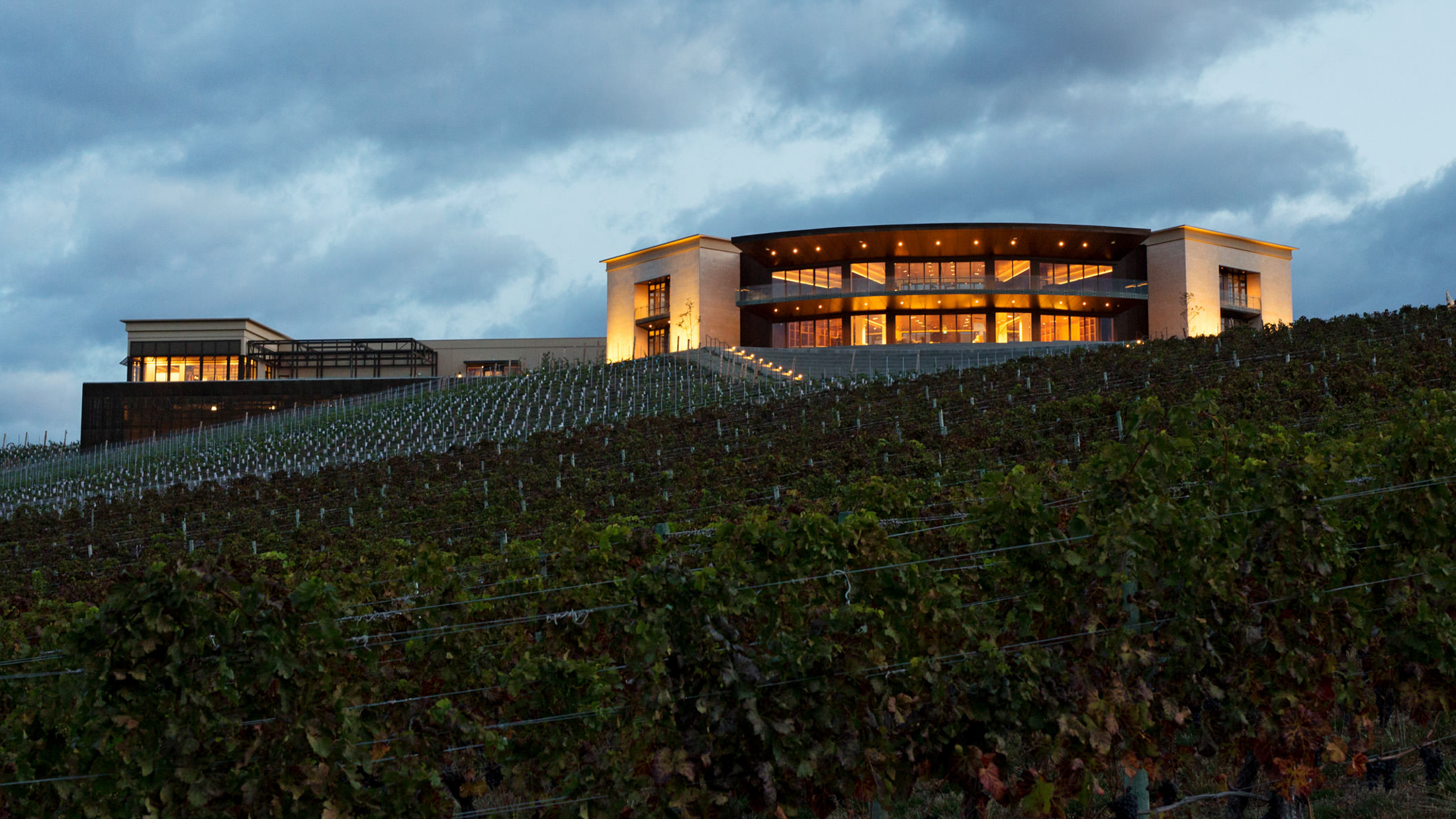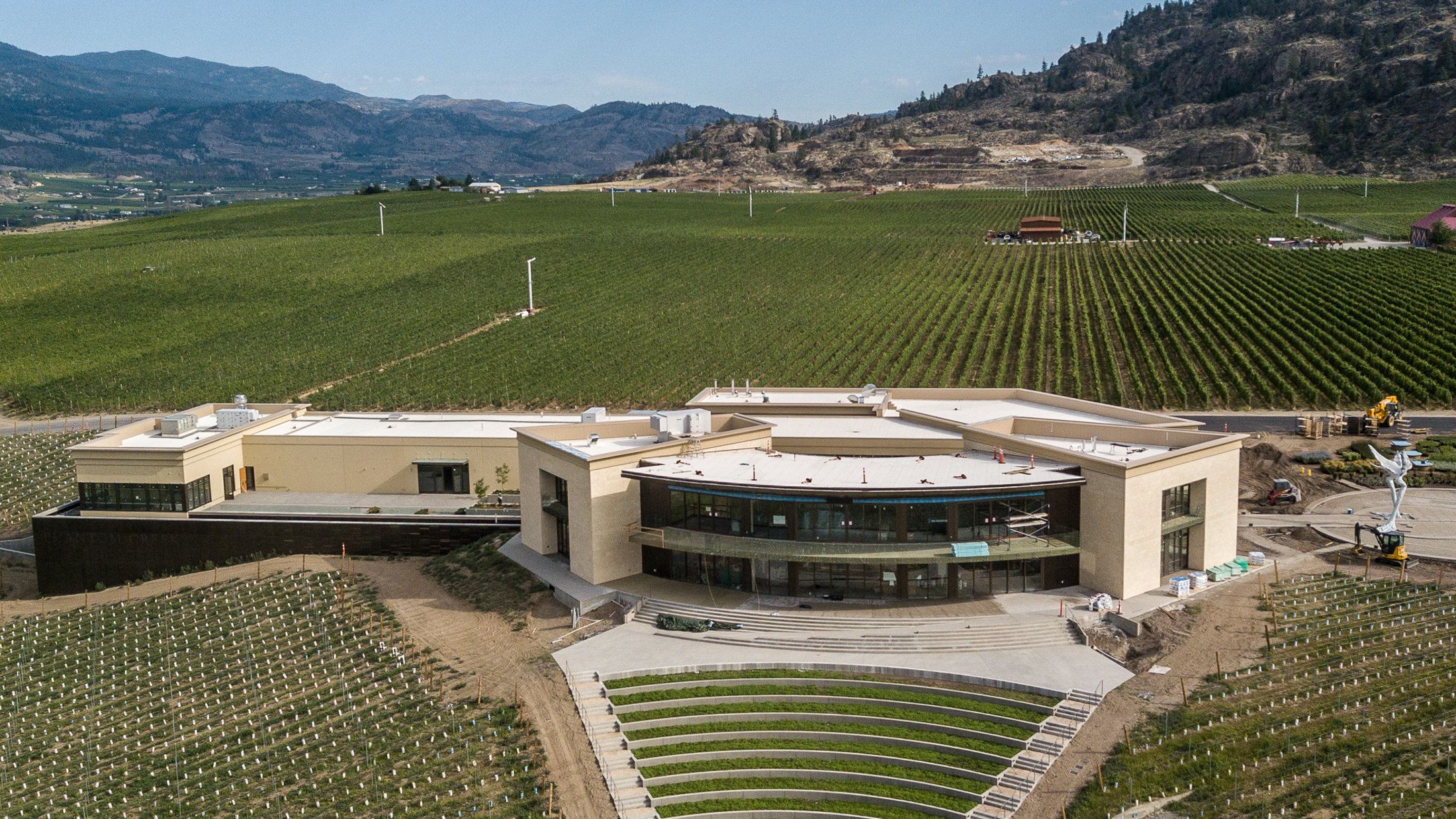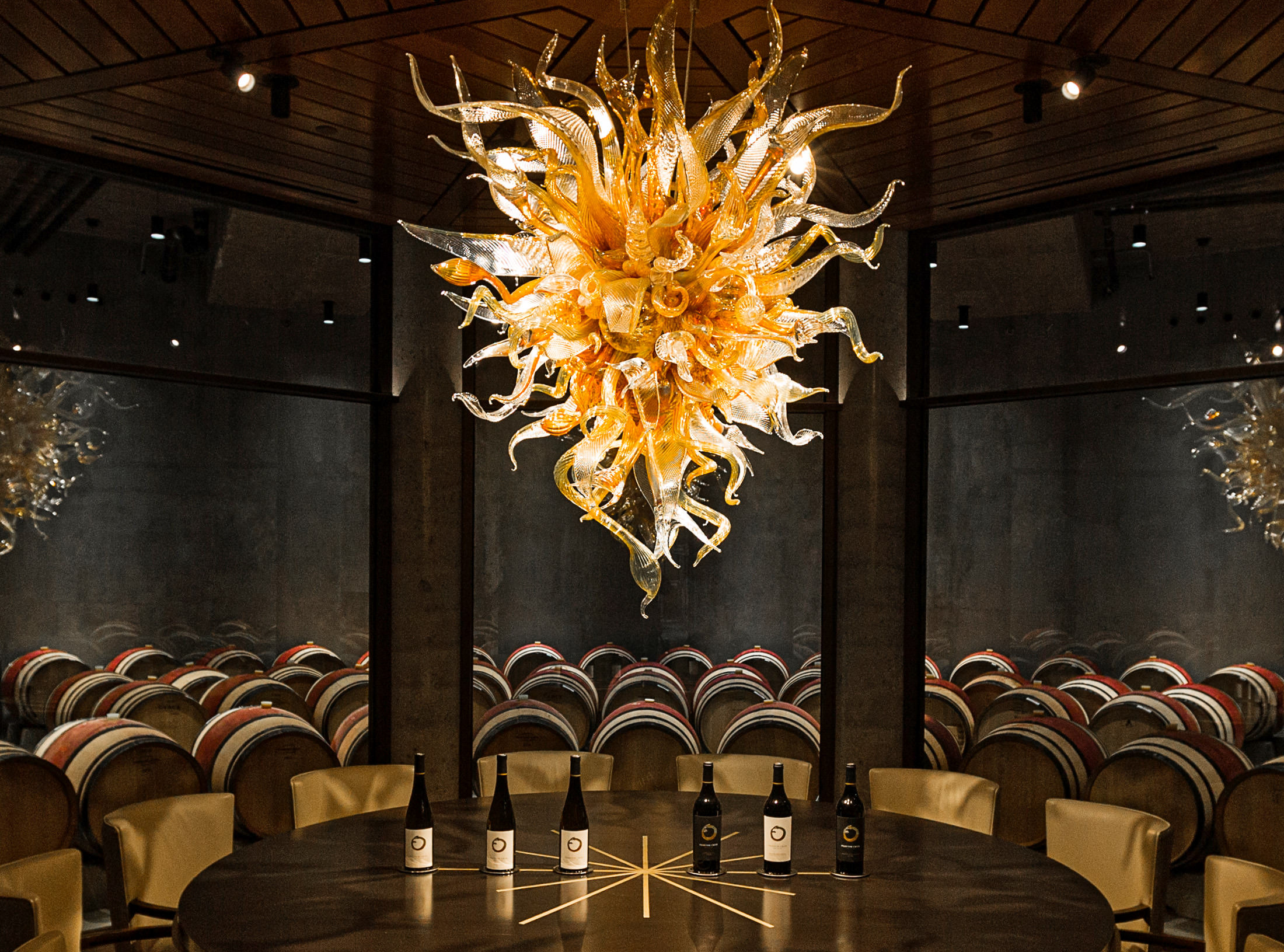There are many great views in the Okanagan, but standing on the terrace of Phantom Creek Estates looking out over a sweeping vista of the Black Sage Bench it seems impossible to imagine one better. Certainly, it’s easy to see why founder and proprietor Richter Bai picked this spot to build his winery—a monumental project, in every sense.
Perched above the neat rows of vines that roll down into the southern Okanagan valley, Phantom Creek can’t help but stand out. Designed by noted winery architect John Taft, the vast building that incorporates the wine-making operation and hospitality areas is clad in imported Egyptian limestone the colour of sand in keeping with the earth it sits on; from the road beneath, it looks as sleekly understated as a 78,000-square-foot, $100-million structure can. Up close, it’s hard not to be impressed by the balance between the modernity of the facade and the clear commitment to the surrounding environment. Even the name—taken from one of the estate’s inherited vineyards—references the transient nature of the ground beneath, the glacial ice flows that carved the valley into existence.

Photo courtesy of Phantom Creek.
An expansive tasting room occupies the ground floor of the building nearest the entrance, opening to a large patio that includes reserved sections for wine club members. The floor above accommodates private dining, entertaining, tasting, and meeting rooms, all with floor-to-ceiling views of the valley. CEO Santiago Cilley has plans for a second, more exclusive club, where members will be able to store wines from their own cellar in specially designed lockers and have private access to the wine-making level and a space for relaxing while drinking and discussing wine.
The restaurant across a courtyard—aiming for a spring 2021 opening—will offer both inside and outside dining and, Cilley says, not just estate wines (as many local vineyard restaurants do) but a curated list that could stand up anywhere. For now, Cilley has employed two Canadians—a chef and sous-chef from New York’s one-Michelin-star Estela to create charcuterie boards and tasting plates. The charcuterie board is exceptional; you won’t find another like it.
Currently, the winery owns six vineyards around the valley, where its red varietals—focused on Bordeaux but including syrah—are all harvested as single-vineyard wines. The whites—mostly Alsatian, with the addition of pinot gris—are its only non-estate varietals, but that is due to change with the purchase of a 60-acre vineyard in the Similkameen Valley. Each vineyard’s soil is different, bringing unique terroirs to the small lots produced. Phantom Creek produces 16 reds and 17 whites, all grown organically and biodynamically; the first vintage to hold organic certification will be 2021.
“This is a long-term project,” says Cilley as we look out at the vines. “Mr. Bai really cares about being a good steward of the land.”

Photo by Lionel Trudel, courtesy of Phantom Creek.
The intention, of course, is not to simply farm with care and attention but to produce consistently high quality wines. Once harvested, the grapes are treated gently—there is no pumping fruit around; instead, the pressing, fermentation, and aging process employs gravity to move from one stage to the next. Before that, an optical sorter analyzes 2,000 grapes per second, removing any that do not meet the ideal size and colour specifications for a specific varietal.
“It’s a way to make sure only the best comes into the winery,” Cilley explains.
And once the best is in, it’s treated like royalty: the underground wine-making level is breathtakingly beautiful. The first room is lined with enormous French oak tanks: “We want to let each site speak,” says Cilley. “The reds are fermented in these, and then most of them are aged in large barrels, meaning less oak is transferred into the wine.”
The whites are no less well rested: the next room is lined with the most beautiful handmade foudres from Austria’s cult cooperage, Stockinger (so sought after they can pick and choose their clients), the finer, tighter grain slowing down fermentation.

Photo by Olaf Strassner, courtesy of Phantom Creek.
“We age our whites quite a bit—around 12 months,” notes Cilley. “It brings more texture and more complexity. It also means our whites go to market a year later than everyone else’s.”
We walk deeper into the underground section and arrive at the Founder’s Room—a temple to the love of wine, where concentric rings of barrels are bathed in low light. In the centre, a glass-walled private room contains a large table for wine dinners and tastings, and is lit up by a specially commissioned Dale Chihuly chandelier featuring 100 separate pieces of blown glass that, put together, resemble a sunburst.
“When you get here, it’s all about the wines,” Cilley smiles. “Here we are sitting with multiple vintages aging around us. I tell people—only half-jokingly—that the winery was built around this room.
“The owner wanted to create a shrine to wine, and here it is.”
This article is from our Autumn 2020 issue. Read more stories from Food and Drink.









